'I bought a lighthouse for £56k and spent 10 years restoring it'
From a derelict historic landmark to the ultimate home by the sea
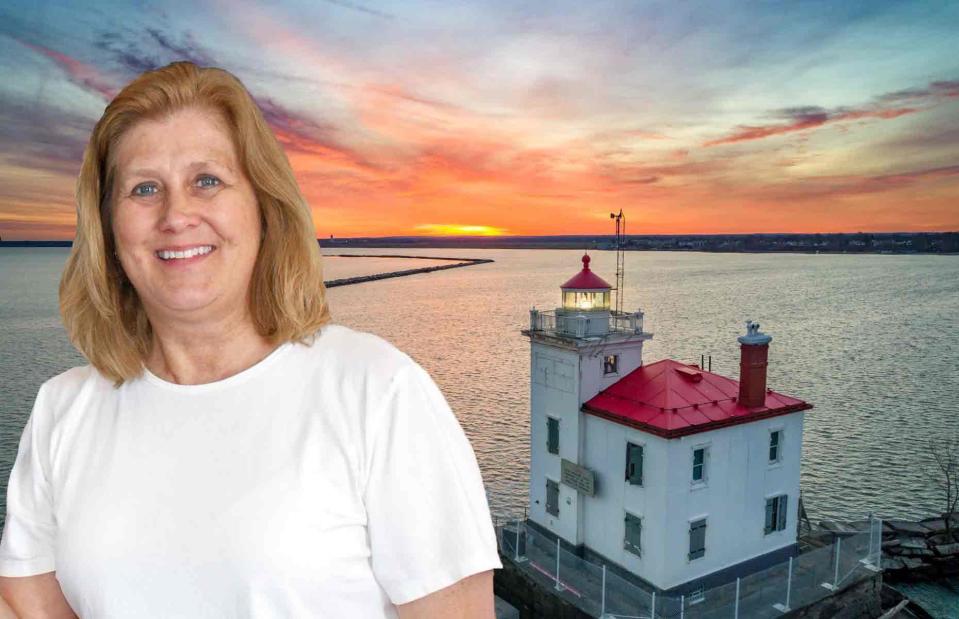
Andrew Cross / AC Aerial Photography ; Jackie Coleman / Sheila Consaul
When Sheila Consaul decided to bid on this historic lighthouse in Ohio in a government auction she had no idea what a renovation of this scale would entail. In 2011, she finally won the lighthouse with a bid of around $71,000 (£56k) but it took a lot more money and ten long years to transform it into her dream vacation home with unparalleled ocean views.
Read on to find out how she transformed this landmark from a derelict maritime disaster into the stunning space it is today. All dollar values in US dollars.
Lighthouse lady
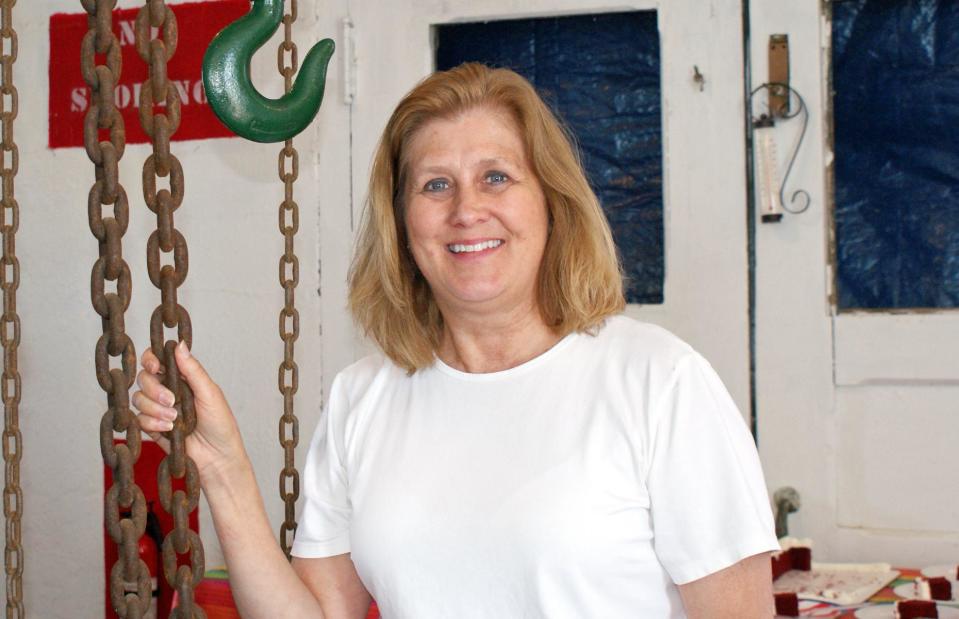
Jackie Coleman / Sheila Consaul
Although not specifically on the lookout for a lighthouse renovation project, Sheila, a communications executive, was blown away when she first visited the historic red-and-white property on the shores of Lake Erie. She realised it met all her criteria: it had to be close to the water (a lake or ocean), within a few hours' drive of a job in Washington, D.C., and something with character.
Coastline feature
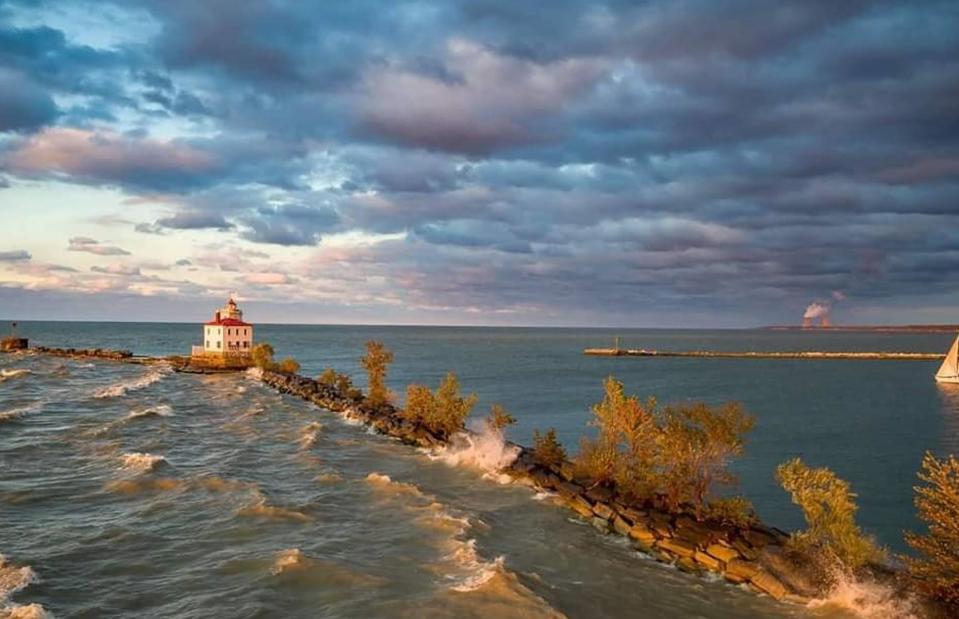
Andrew Cross / AC Aerial Photography
Lighthouses were once a common feature along America’s coastline, their beacons guiding mariners to safer shores. But modern-day advances in GPS technology and navigation have rendered many of them redundant.
Sheila purchased the lighthouse, seen here in this stunning image by Andrew Cross, via a federal government programme which allows abandoned lighthouses to be sold to the public.
Historic landmark
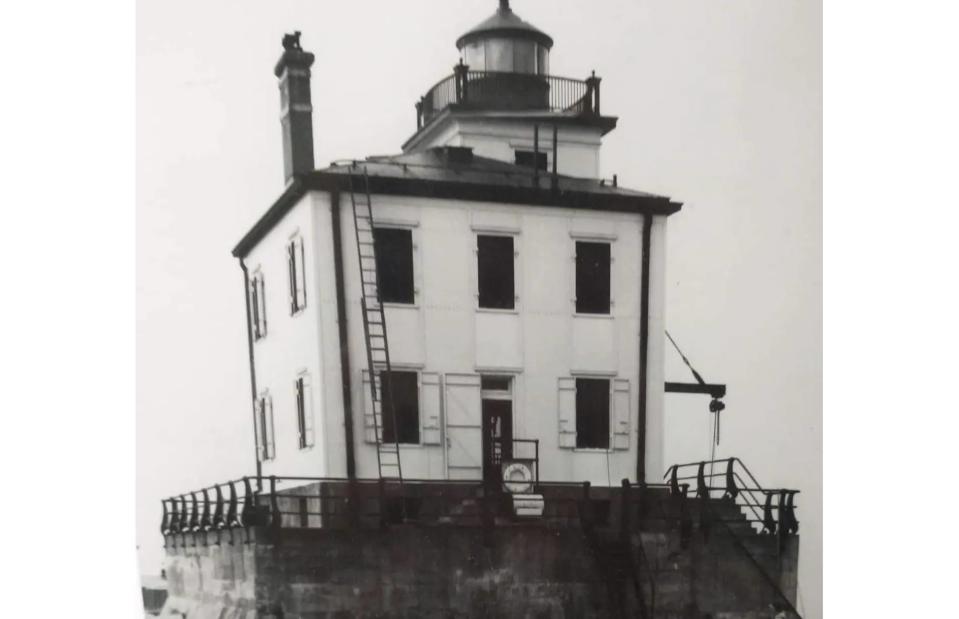
Public Domain / @Fairportharborwest / Instagram
The 40-foot-high Fairport Harbor West Lighthouse was built in 1925 to replace the Grand River Lighthouse, which had guided ships into Fairport Harbor and the town of the same name for nearly 100 years.
Decommissioned in the 1940s, the last keepers moved out in 1948 and the building sat empty and forlorn for more than 70 years until Sheila came to its rescue.
Neglected state of repair
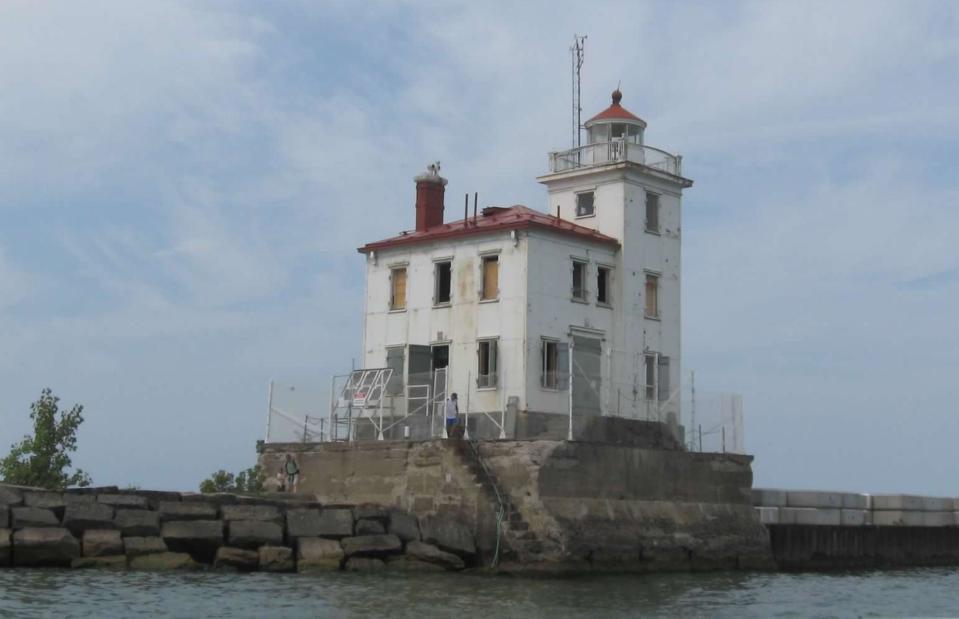
Ellen Consaul
The 3,000-square-foot structure, made of steel, brick and concrete, was in a sorry state when Sheila bought it.
Broken windows and peeling paintwork were the least of her worries, however. The lighthouse required a total overhaul. The building was off-grid, and had no toilets, running water or electricity.
Challenging renovation
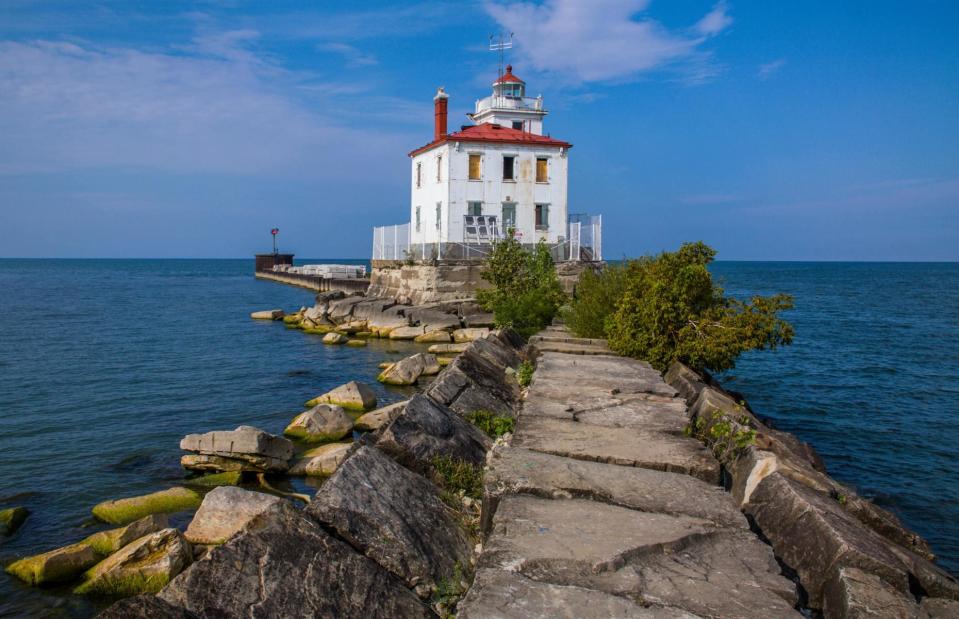
Geo Stills / Alamy Stock Photo
While Sheila had undertaken some preservation work in the past, having renovated a historic home, she had not bargained for the extent of the work involved, nor the cost.
“I’ve been renovating it pretty much ever since I bought it,” says Sheila, who estimates she has spent around $300,000 (£237k) in the process. “When I bought it, little was left from its early days as a residence,” she told MidwestLiving. “I quickly discovered the renovation would be a significant challenge.”
Inaccessible in winter
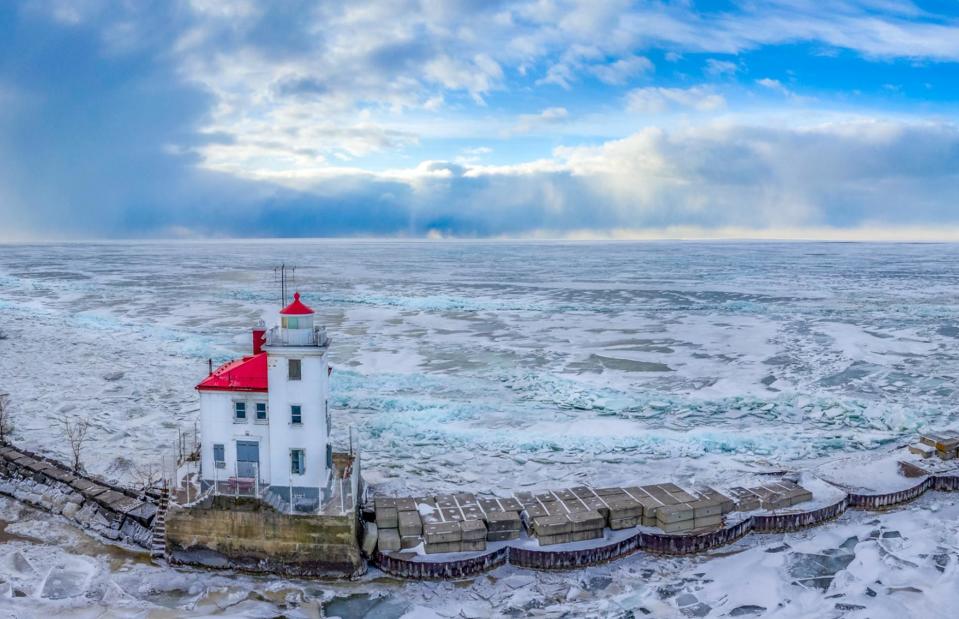
Andrew Cross / AC Aerial Photography
Probably the lighthouse's greatest challenge is its inaccessibility. It sits on the end of a break wall at the edge of a sheltered harbour and the only way to get there is through a state park, across protected dunes, along the beachfront and, finally, climbing up onto the rocky and very uneven break wall.
"While it provides a great workout, the walk is tedious and can be downright dangerous, especially in wintry conditions," says Sheila. “And then there’s the final step: scaling a 10-foot ladder to the platform from the boulders below.”
Total revamp
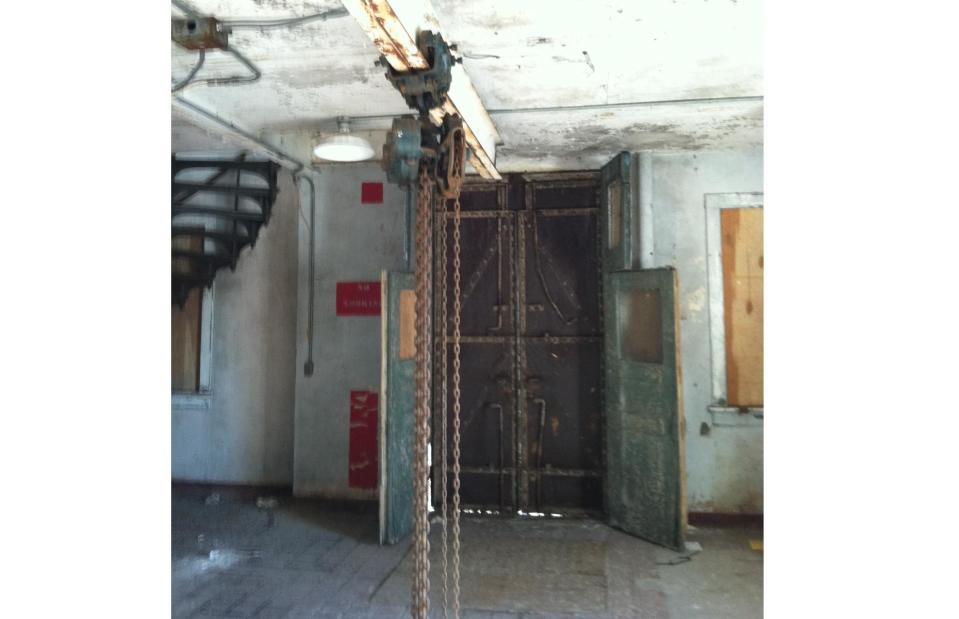
Sheila Consaul
The limited access complicated the extensive work needed. Everything had to be carried to and from the property, including food, water and fuel for the generator, as well as building materials, which had to be delivered by boat and crane.
“The first time I pulled open the massive cast iron door of Fairport Harbor West and walked inside as the new owner, it looked sad and empty. There was little light except what streamed through the broken glass of the few windows that weren’t boarded up,” says Sheila.
Off grid living
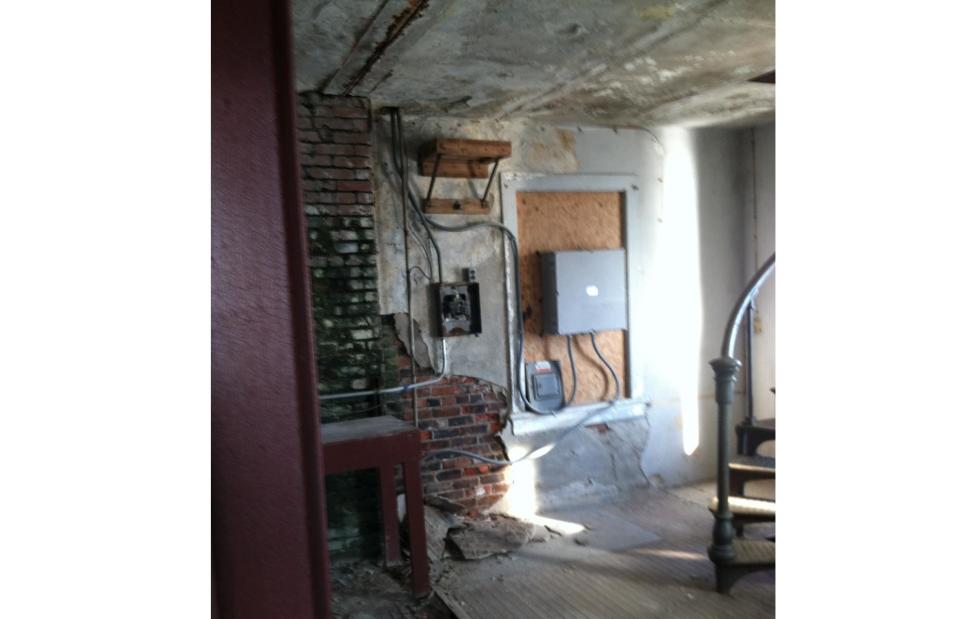
Sheila Consaul
There was plenty of work to do as you can see in these images. There were no doors in the doorways, plaster was falling off the walls and all the windows were broken.
There was no plumbing and wires hung from a decades-old electrical panel, even though there was no source of electricity from the mainland. Sheila had to entirely rewire the property and redo the plumbing system.
Stairway to heaven
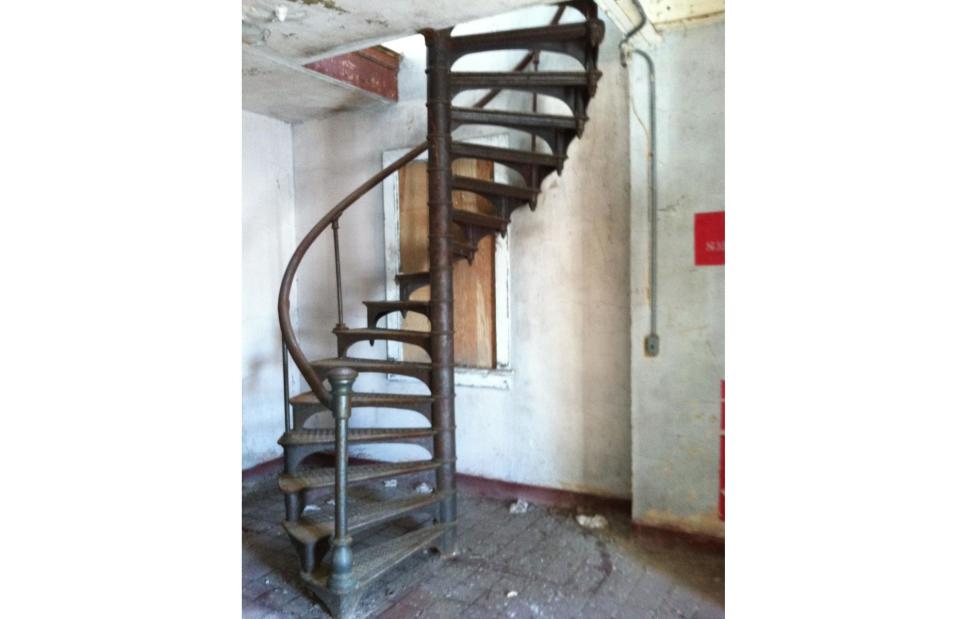
Sheila Consaul
The huge cast-iron circular staircase, leading from the first floor, is one of the few original items that remained intact. Everything else had been ripped out and carried away. With a limited budget, Sheila enlisted the support of friends and local volunteers to help clear the property and prepare it for the next stage of its renovation.
Some of her helpers were people who had heard of her project in local press and once she even paid a Girl Scout troop with granola bars to help wash the windows. Ingenious!
The lighthouse now and then
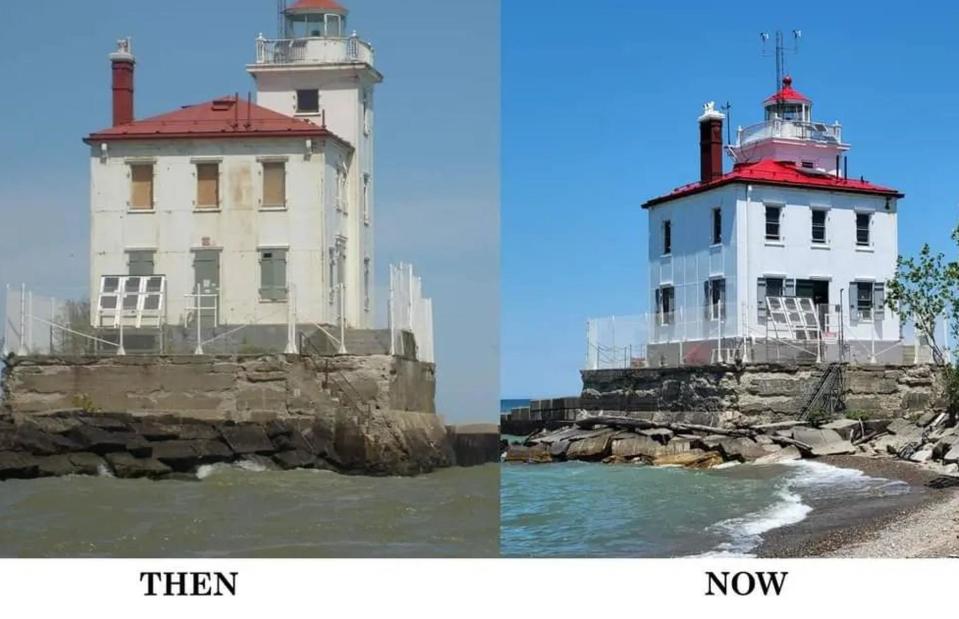
Sheila Consaul
Her first priority was to give the entire property a fresh lick of paint. “After using 80 gallons of paint inside and 50 gallons of marine grade (read: expensive!) paint outside, the building shines like new,” says Sheila.
It’s certainly a vast improvement from the original to judge by this ‘now and then’ comparison image.
Raising the roof
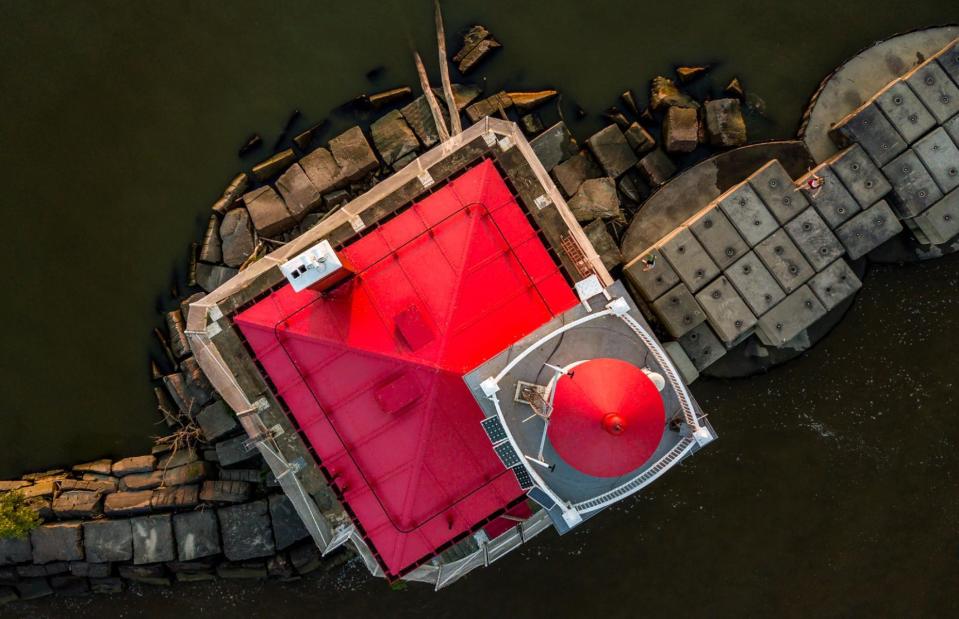
Andrew Cross / AC Aerial Photography
Even the roof needed to be painted a shiny red so that it could be seen from miles around, and look its best in the countless aerial photographs that have been taken of the lighthouse in its stunning setting.
“One of my long-time volunteers, a house painter by trade, painted the roof and exterior, scaling long ladders and strapping himself to the roof like Spiderman," recalls Sheila. “He was certainly my superhero.”
Beacon of hope
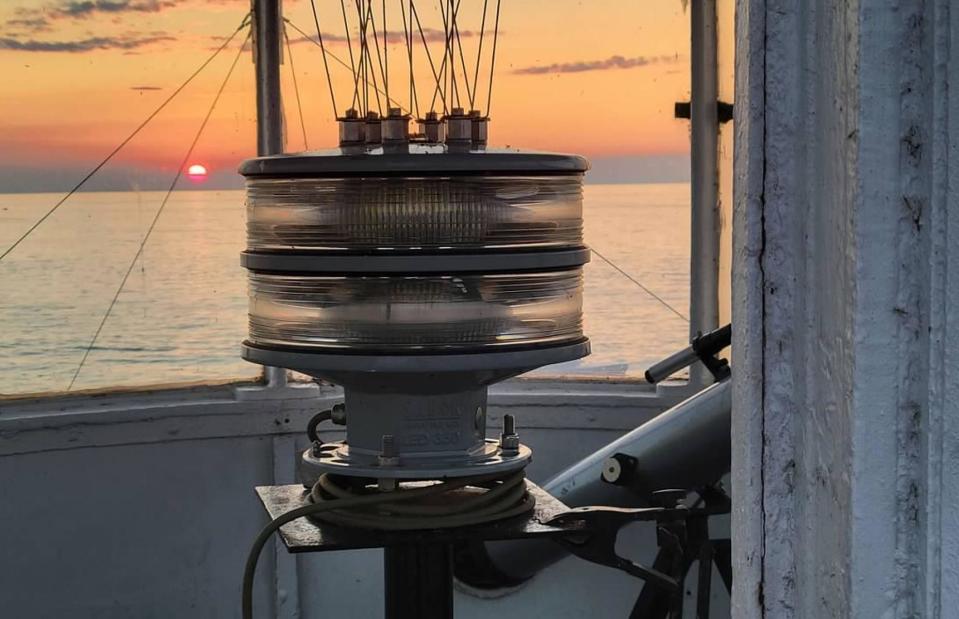
Sheila Consaul
If you’re wondering what happened to the beacon, the US Coast Guard maintains it as an 'active aid to navigation'. The current LED beacon, which is run by solar power, was made in Finland and operates from dusk to dawn.
The original beacon would have been more similar to the Fresnel lens on display at nearby Fairport Harbor Marine Museum and Lighthouse, which served from 1825 until Sheila’s lighthouse took over in 1925.
Holiday home
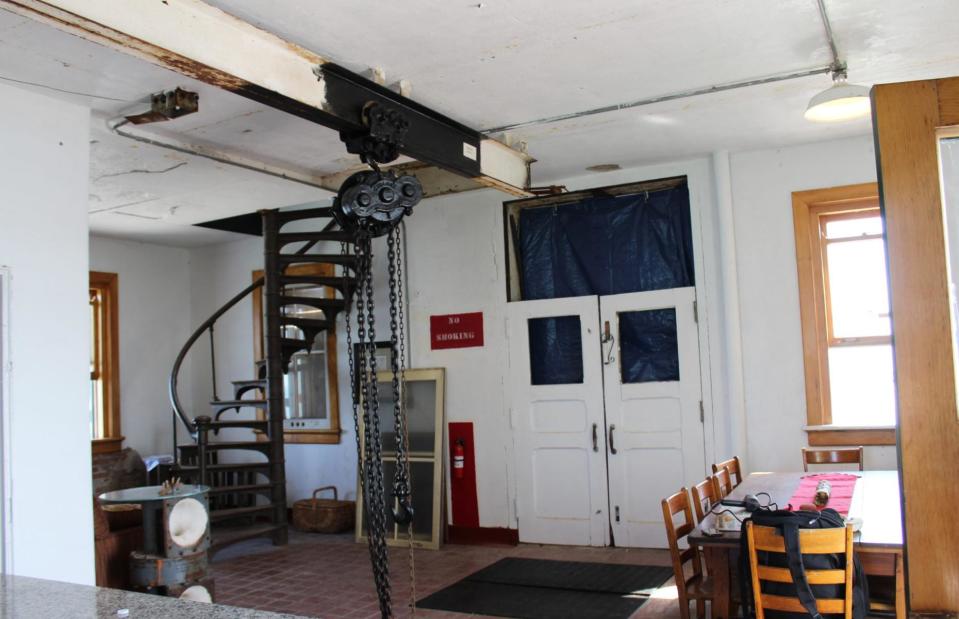
Sheila Consaul
Despite the challenges, Sheila has turned the lighthouse into a comfortable holiday home with three bedrooms, three bathrooms, a kitchen, utility room, dining room and a spacious living room, where the cast iron staircase is the focal point of the space. It's Sheila’s favourite thing in the entire lighthouse.
The hardwood floors and freshly painted walls make the place incredibly welcoming for guests.
Modern kitchen
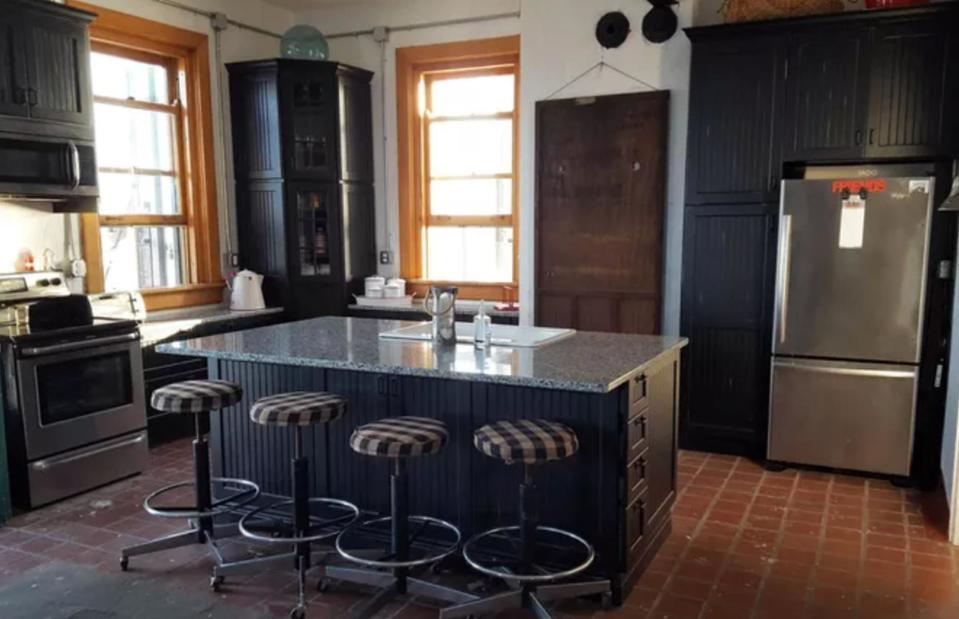
Sheila Consaul
A big part of the budget was spent on installing a new kitchen, complete with granite countertops, appliances and black beadboard distressed cabinets, along with a white cast iron sink. “I wanted the kitchen to be modern yet fit seamlessly into the industrial/historical lighthouse aesthetic," says Sheila.
Electricity is now provided by a generator. “When I need electricity, I flip on my generator, but I try to limit its use because it runs on gasoline and I have to carry gasoline out here. It’s my least favourite job," she says.
Not connected to water mains
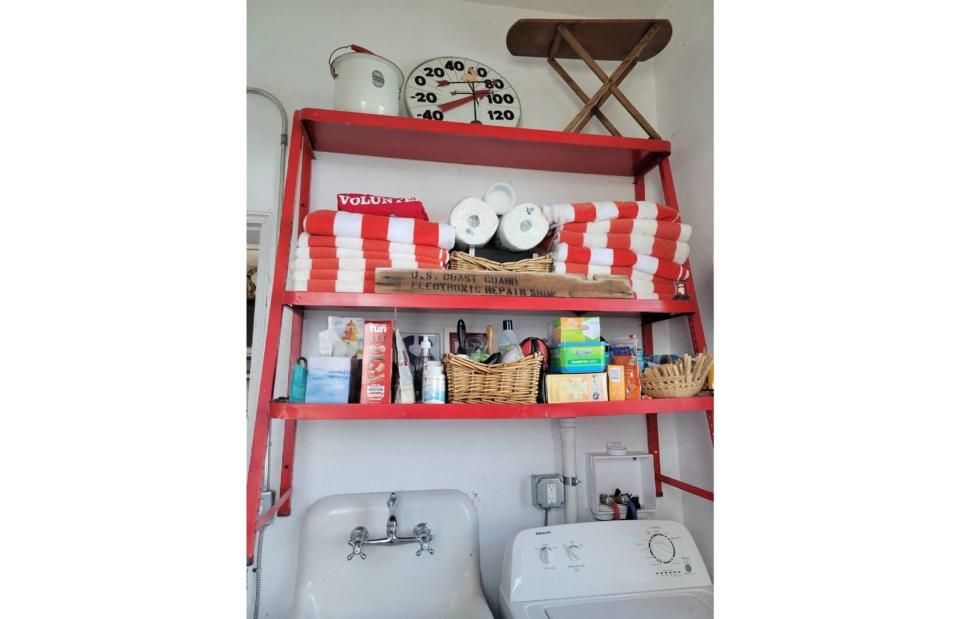
Sheila Consaul
Alongside the kitchen is a small utility laundry room, where the colour scheme reflects that of the lighthouse exterior.
The lighthouse is not connected to the water mains or the sewage system. "We use composting toilets and I have to collect rainwater, which goes into the original cistern downstairs," Sheila explains. “From there, that water is pumped out, treated and is available for use in the lighthouse."
Recycled lighthouse objects
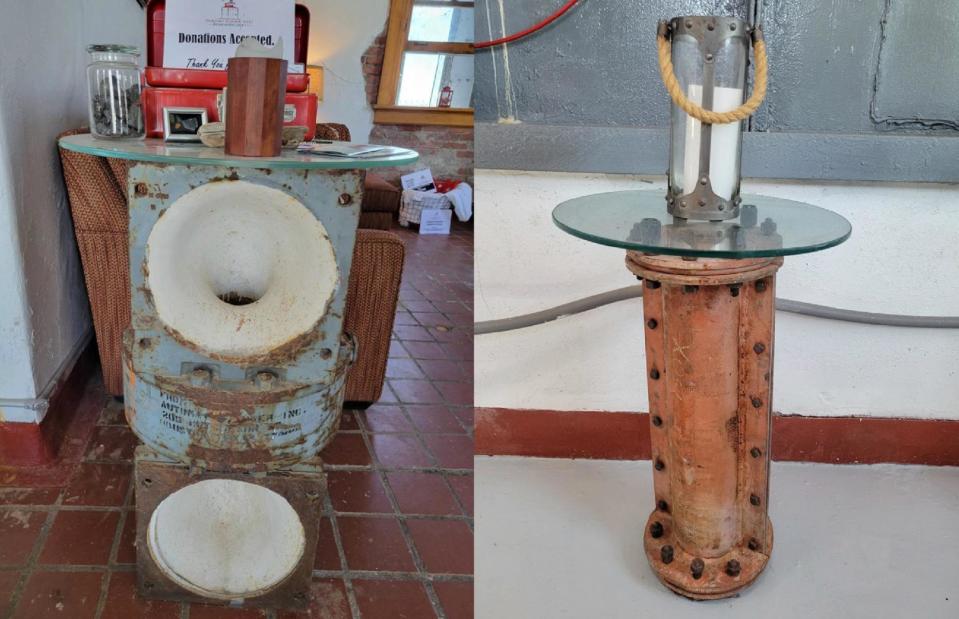
Sheila Consaul
Sheila wanted to reference the lighthouse in the interior design where possible, turning several objects that had been left behind into furniture, including a foghorn, now an end table; a steel cable wheel, which is now a side table; and another steel cable wheel which she repurposed to serve as a floor lamp.
Stained-glass lighthouse
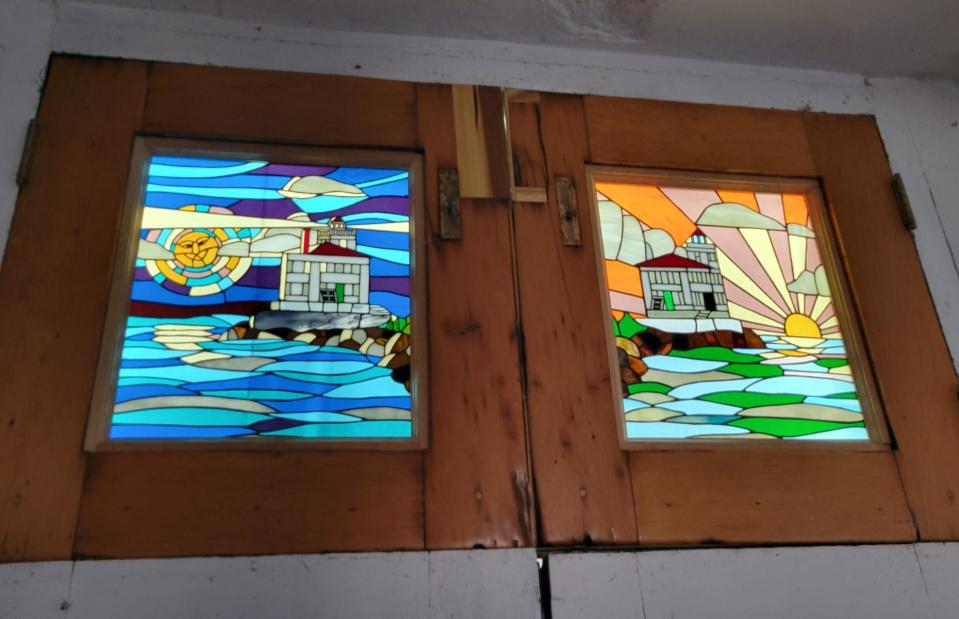
Sheila Consaul
“One of my favourite things in the lighthouse is the stained-glass window I commissioned for the transom windows of the double doors in the living room," shared Sheila. “The right window depicts a lighthouse sunrise, and the left window shows a night scene.”
Sheila also has a picture gallery of some of the volunteers who helped out on the project which is a lovely reminder of all the hard work that went into the renovation project.
Nautical touches
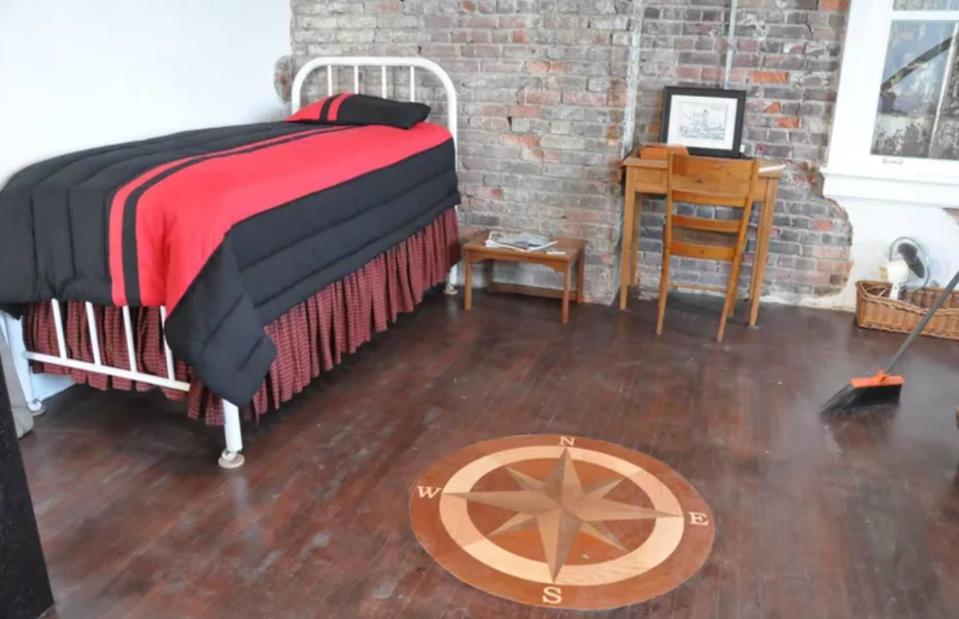
Sheila Consaul
Nods to the history of the lighthouse and its shoreline location are dotted about the place, often in unique ways. The mixed wood compass rose inlay, seen here, was made in Wyoming, points north and is a focal point of the space, which was originally used as the keeper’s living room and communications centre.
The hardwood floors on the second floor were stripped, repaired and refinished in a dark chocolate colour to contrast with the white walls. The original bathroom, where Sheila managed to salvage its charming hexagonal tiled floor, is also located on this floor.
Exposed brickwork
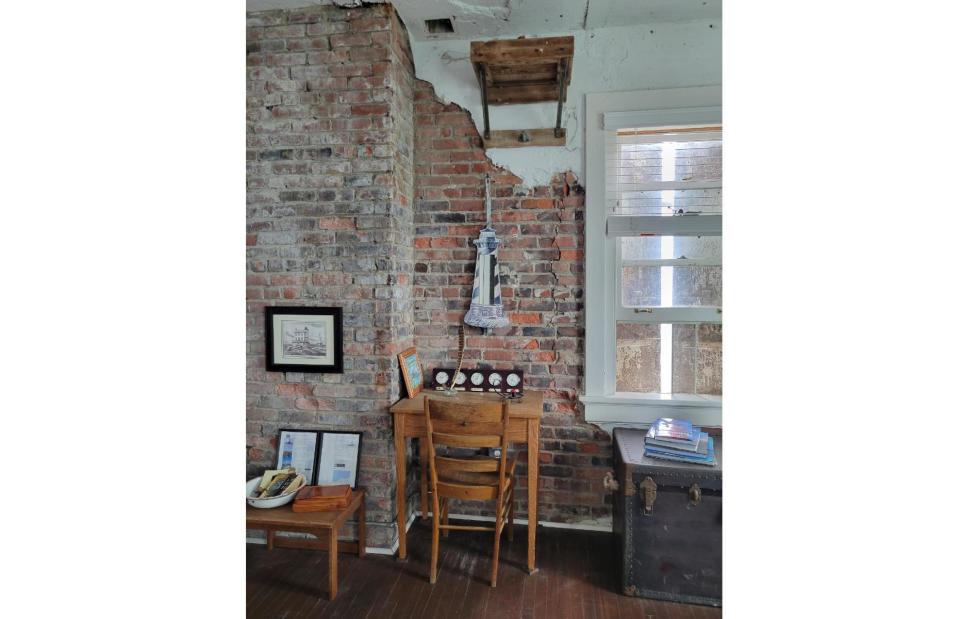
Sheila Consaul
Years of neglect and being closed for decades resulted in extensive deterioration and caused large swathes of plaster to fall from the lighthouse walls exposing the brick underneath in places.
Rather than replaster, Sheila decided to make a feature out of it and simply sealed the brickwork and painted the plaster. "I call it the ‘Faux Lighthouse Industrial’ look," jokes Sheila.
Vintage bedroom
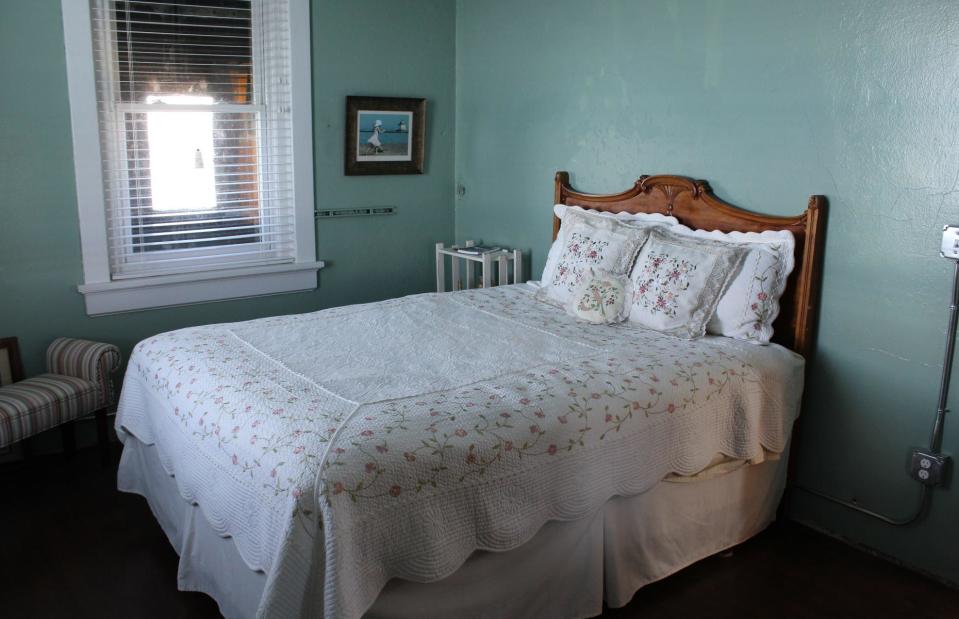
Sheila Consaul
The vintage turquoise walls of this bedroom, with its pretty bed cover, evoke the period in history when the keepers lived here full time in order to tend the light. The bedframes were antique shop finds.
Meanwhile, the yellow bedroom, not pictured, occupies what was the keepers' original kitchen.
Service level
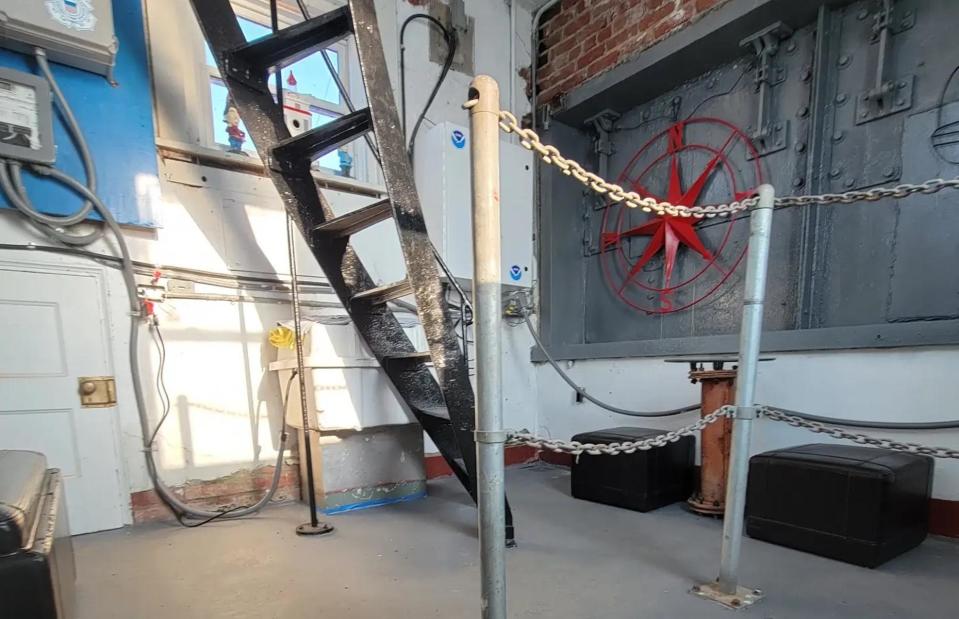
Sheila Consaul
The so-called 'service level' on the third floor is where former keepers would service the light to keep it operational.
These days it houses mechanical equipment for the running of the lighthouse. While there is no internet connection, Sheila gets her internet access from the hotspot on her mobile phone.
Top of the world
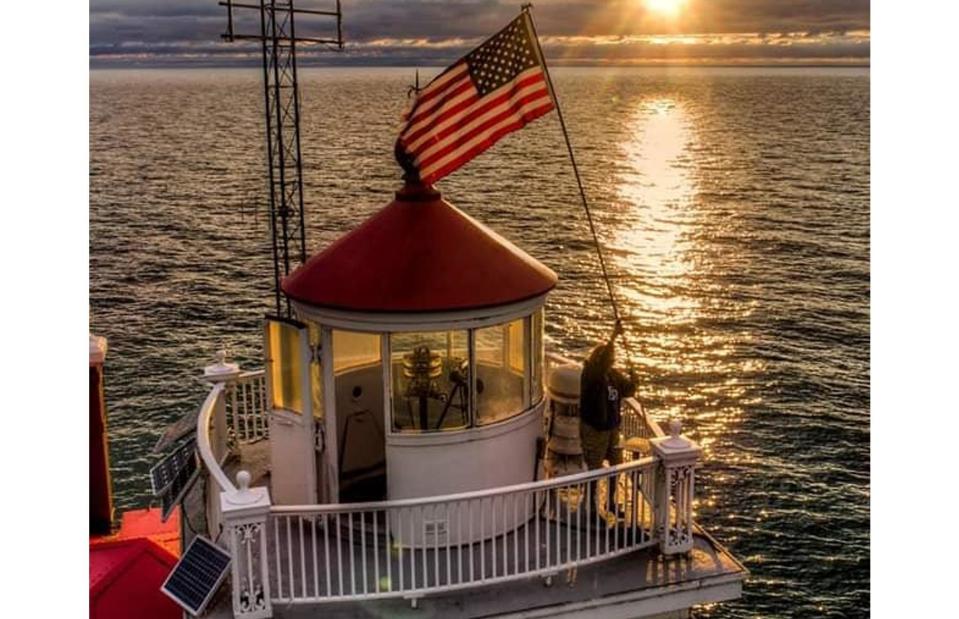
Drone Ohio / @Fairportharborwest / Instagram
A final few steps from the upper floor take you to the top of the lighthouse and viewing platform or ‘widow’s walk’, so-called because it provided a look-out spot where wives of naval men could scan the horizon in the hope of seeing their husband’s ship returning to harbour. In this photo by Drone Ohio, Sheila is planting the flag.
It’s also a good place to enjoy the view of Mentor Headlands Beach and Headlands State Park. Additionally, Sheila installed some solar panels and a wind turbine on the roof to harness the extreme weather conditions.
Historic preservation
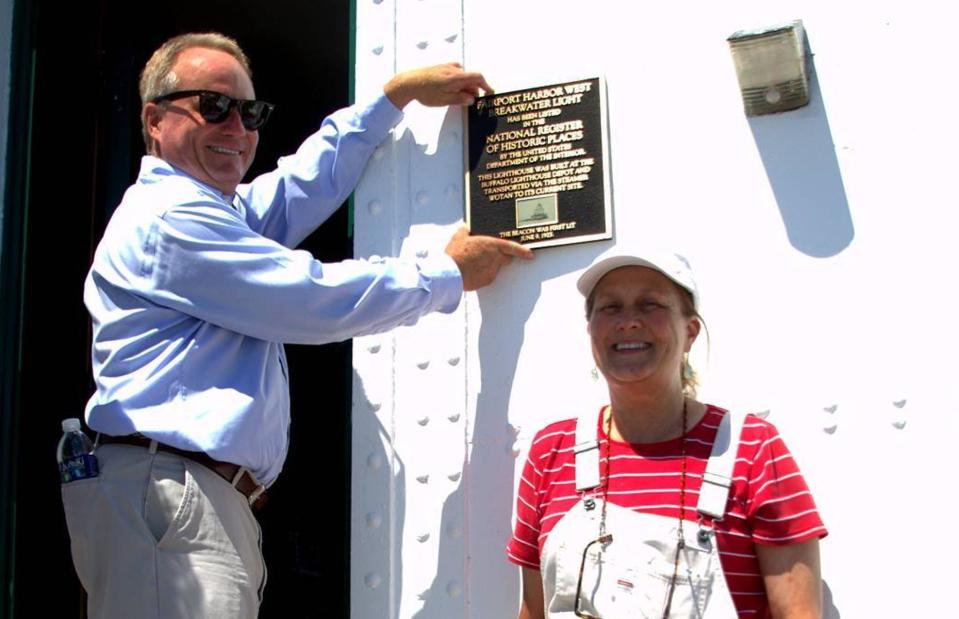
Sheila Consaul
Part of buying a lighthouse from the federal government means that it comes with certain stipulations. "My particular lighthouse sits on a piece of property that is owned by the Army Corps of Engineers," Sheila explains, who paid $2,500 (£2k) for a 25-year lease with the US Army Corp of Engineers.
She has had to work with the US Coast Guard, the National Weather Service and the Ohio State Historic Preservation Office. It's a serious business owning a lighthouse!
Part of the local community
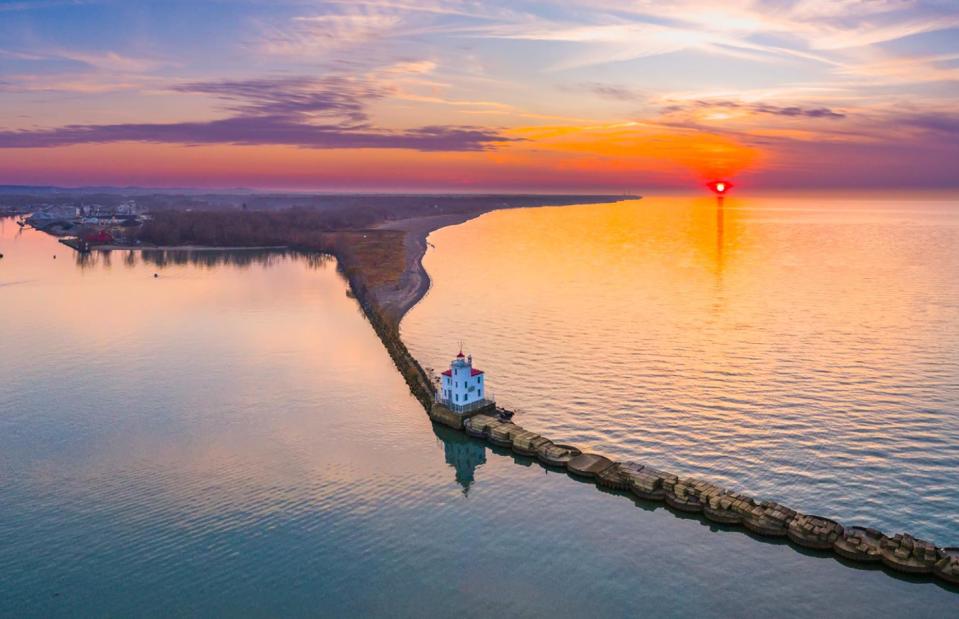
Andrew Cross / AC Aerial Photography
Sheila, who lives in the lighthouse from May to October, has a keen understanding that it is a part of the local community, so has been opening up the lighthouse annually to visitors since 2012.
She also offers private tours and is planning something special for the lighthouse’s centenary in 2025. “It’s been a great challenge, a great opportunity, and I loved every minute of it."


